Items are listed in alphabetical order by artist name. Click on the image to see a larger version. On a desktop, click on the magnifying glass to zoom in even more. To view the image at an even higher resolution or make an appointment for a preview, contact us at 215/891-0214 or auction@photoreview.org.
View the Auction Rules.
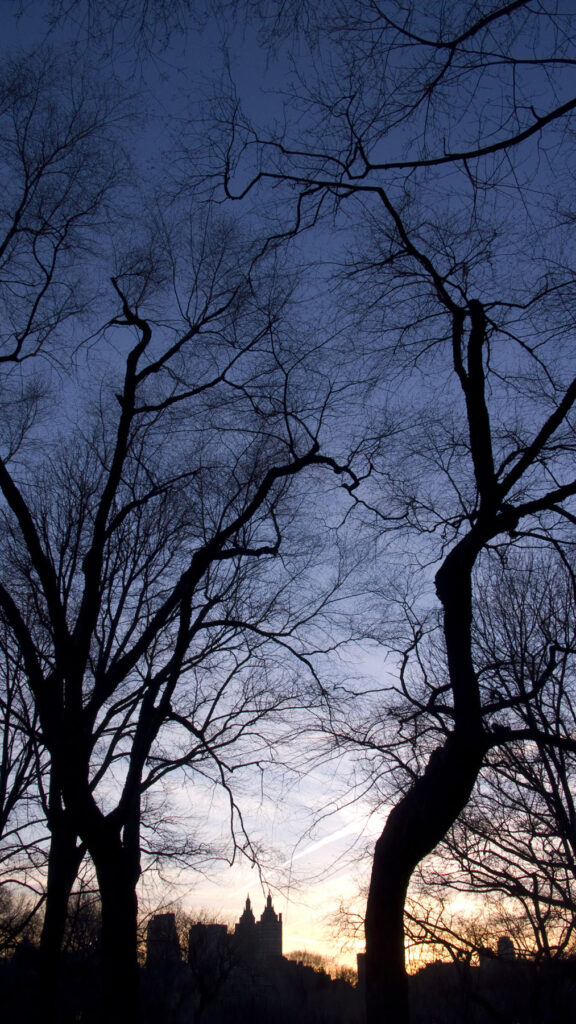
Amie Potsic: Enchanted Forest 3
2015, archival pigment print, signed verso. Image size: 10″ x 17.75″, sheet size: 12″ x 24″ ($350–$700)
BUY NOW – $200
2015, archival pigment print, signed verso. Image size: 10″ x 17.75″, sheet size: 12″ x 24″ ($350–$700)
BUY NOW – $200
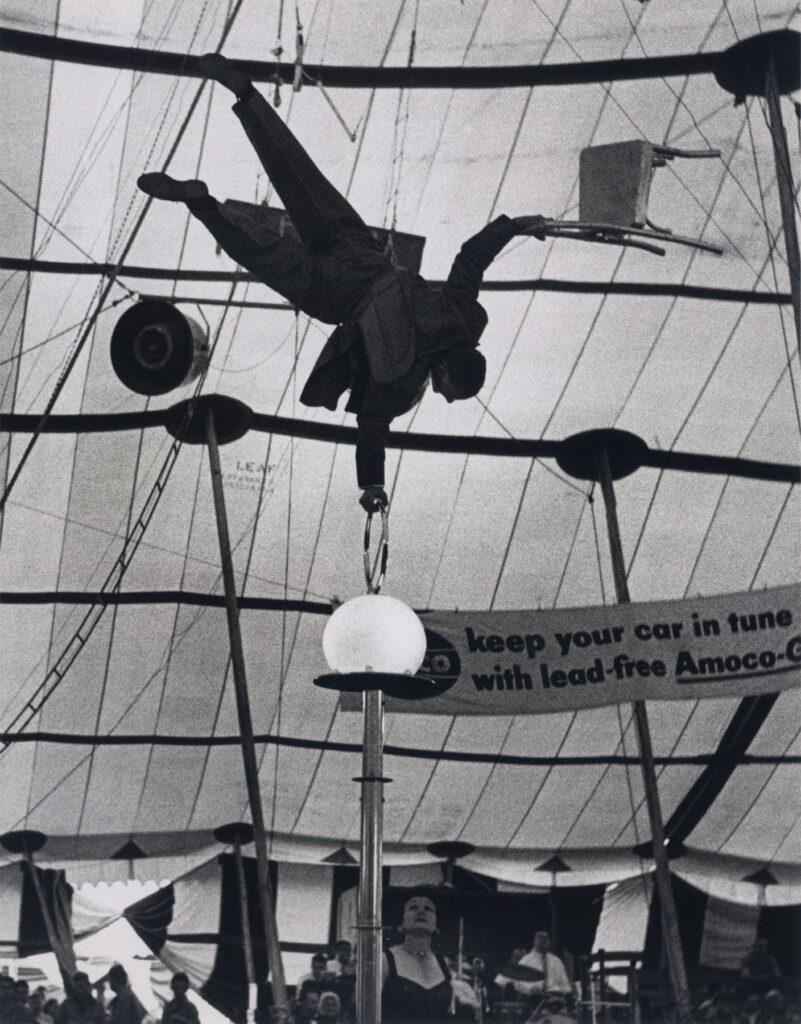
Edward W. Quigley: Circus Acrobat
c. 1940, silver print, artist’s credit stamp and negative number verso. Image size: 9.5″ x 7.5″, sheet size: 9.875″ x 7.875″ ($1,200–$1,800)
A wonderful shot of the performer in silhouette doing a handstand while balancing with a chair. It resembles an oriental ideogram.
Philadelphia-born Edward Quigley (January 3, 1898 – April 6, 1977) was a modernist photographer, who became known in the 1930s for his pioneering experiments with light abstractions and documentation of the Philadelphia area.
BUY NOW – $900
c. 1940, silver print, artist’s credit stamp and negative number verso. Image size: 9.5″ x 7.5″, sheet size: 9.875″ x 7.875″ ($1,200–$1,800)
A wonderful shot of the performer in silhouette doing a handstand while balancing with a chair. It resembles an oriental ideogram.
Philadelphia-born Edward Quigley (January 3, 1898 – April 6, 1977) was a modernist photographer, who became known in the 1930s for his pioneering experiments with light abstractions and documentation of the Philadelphia area.
BUY NOW – $900
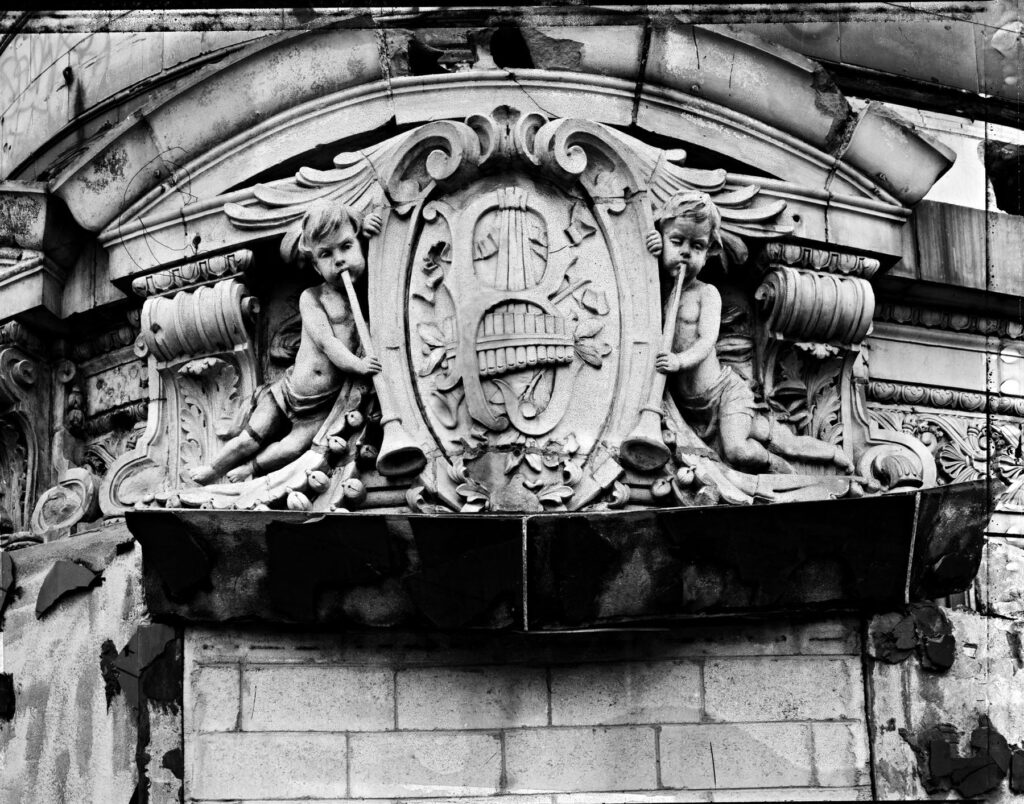
Larry Racioppo: Esquire Theater, Brooklyn
1999, archival pigment print, ed. 1/5, signed, titled, dated, and numbered verso. Image size: 24″ x 30″, sheet size: ($500–$900)
BUY NOW – $250
1999, archival pigment print, ed. 1/5, signed, titled, dated, and numbered verso. Image size: 24″ x 30″, sheet size: ($500–$900)
BUY NOW – $250
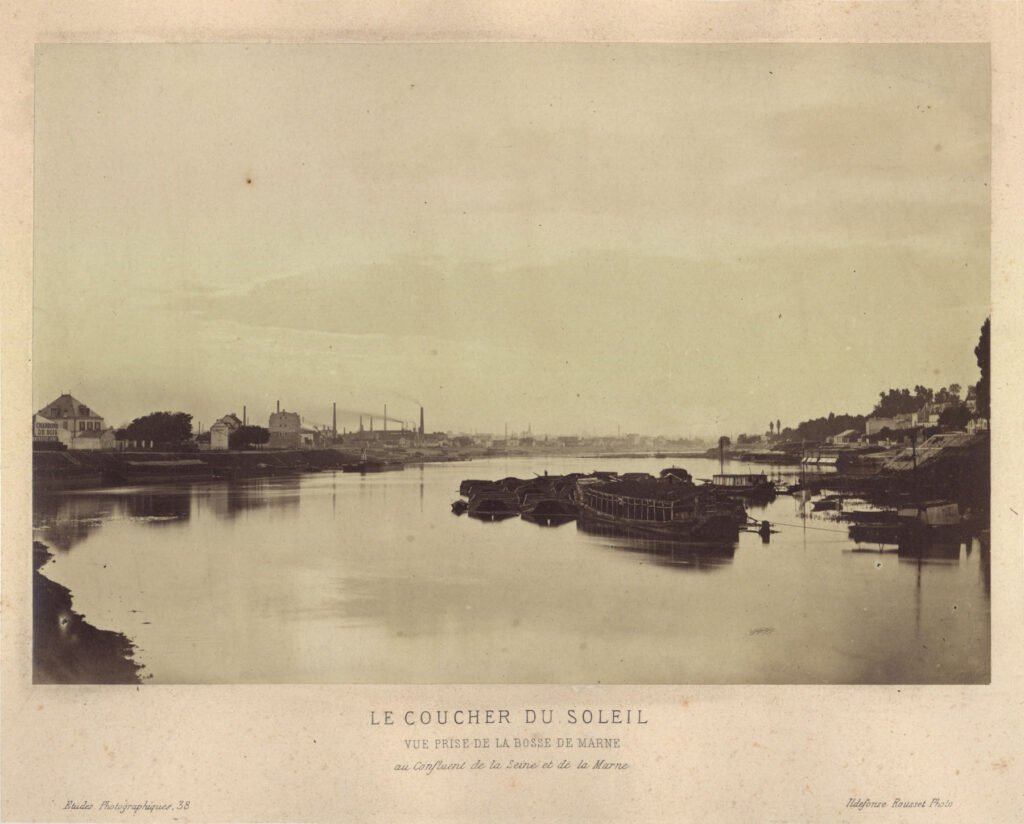
Ildefonse Rousset: LeCoucher du Soleil
1865, albumen print from wet collodion negative, title and credit on mount recto. Image size: 4.875″ x 7.375″, sheet size: 9.5″ x 12.5″ original mount ($800–$1,600)
BUY NOW – $400
1865, albumen print from wet collodion negative, title and credit on mount recto. Image size: 4.875″ x 7.375″, sheet size: 9.5″ x 12.5″ original mount ($800–$1,600)
BUY NOW – $400
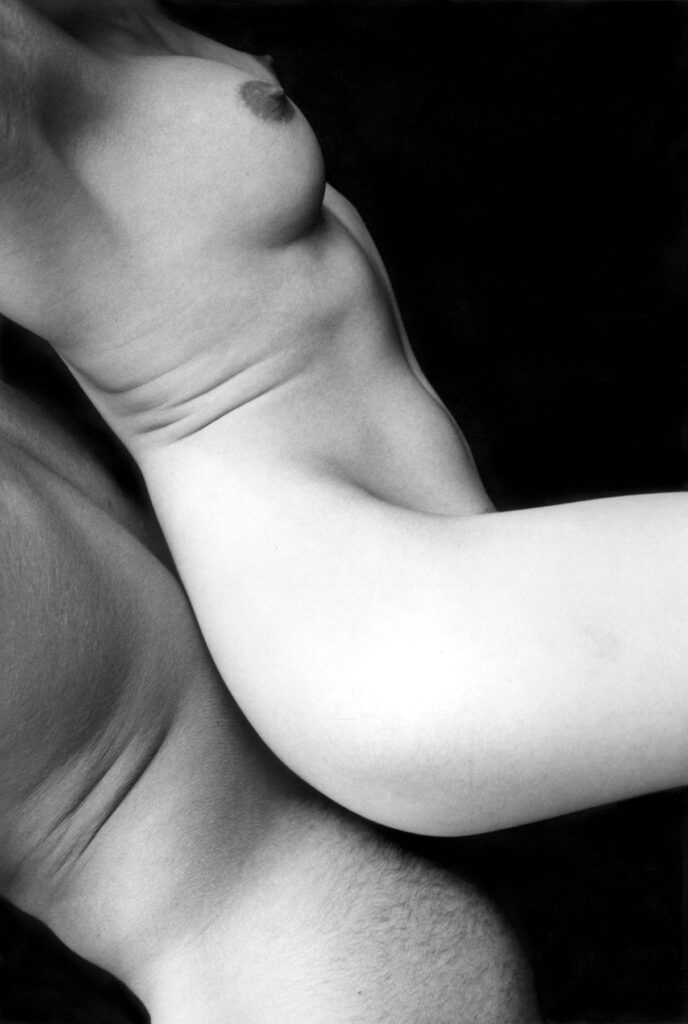
Ernestine Ruben: Two Nudes
1984, silver print, ed. 5/15, signed, titled, and dated verso. Image size: 12.25″ x 8.125″, sheet size: framed 20″ x 16″ ($750–$1,500)
BUY NOW – $500
1984, silver print, ed. 5/15, signed, titled, and dated verso. Image size: 12.25″ x 8.125″, sheet size: framed 20″ x 16″ ($750–$1,500)
BUY NOW – $500
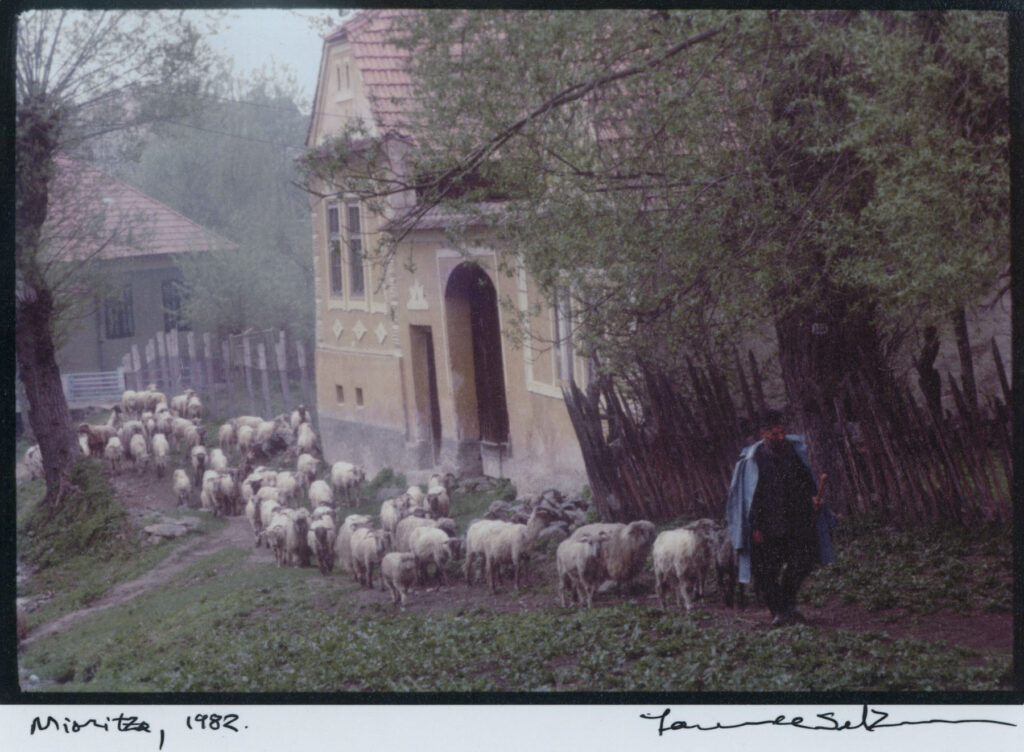
Laurence Salzmann: Mioritza
1982, vintage chromogenic print, signed, titled, and dated recto. Image size: 6.25″ x 8.875″, sheet size: 8″ x 10″, framed 11.75″ x 14.5″ ($1,000–$2,000)
Born and raised in Philadelphia, Laurence Salzmann has been a photographer and filmmaker since the early 1960s. After studying film in Paris, Salzmann attended Temple University, where he completed a BA in German Literature (1965) and an MA in Anthropology (1971). His photographic work is deeply informed by his background in anthropology and in many of his long-term projects he documents the lives of little known ethnic or social groups, both in the United States and abroad.
In 1974 Salzmann traveled to Romania on a Fulbright grant and for the next two years he lived in the town of Radauti in the Bukovina region. During this time he photographed the members of the town’s dwindiling Jewish community and documented their cultural practices and vanishing way of life. 8000 Jews lived in the town in 1930, but their community was uprooted and largely wiped out by the Holocaust. Salzmann notes, ‘Six thousand Romanian Jews perished during World War II; some died in concentration camps in Transnistria, but most did not survive the initial hardships of deportation. At the end of the war, a few returned, only to find their homes gone and the life they had known swept away.’ When he himself arrived in Radauti in 1974 there were only 240 Jews remaining among the town’s population of 22,000, many of them part of an older generation. In 1983 Salzmann’s photographs were published as a book, The Last Jews of Radauti. He also made a complementary film, which was broadcast nationally on PBS.
BUY NOW – $500
1982, vintage chromogenic print, signed, titled, and dated recto. Image size: 6.25″ x 8.875″, sheet size: 8″ x 10″, framed 11.75″ x 14.5″ ($1,000–$2,000)
Born and raised in Philadelphia, Laurence Salzmann has been a photographer and filmmaker since the early 1960s. After studying film in Paris, Salzmann attended Temple University, where he completed a BA in German Literature (1965) and an MA in Anthropology (1971). His photographic work is deeply informed by his background in anthropology and in many of his long-term projects he documents the lives of little known ethnic or social groups, both in the United States and abroad.
In 1974 Salzmann traveled to Romania on a Fulbright grant and for the next two years he lived in the town of Radauti in the Bukovina region. During this time he photographed the members of the town’s dwindiling Jewish community and documented their cultural practices and vanishing way of life. 8000 Jews lived in the town in 1930, but their community was uprooted and largely wiped out by the Holocaust. Salzmann notes, ‘Six thousand Romanian Jews perished during World War II; some died in concentration camps in Transnistria, but most did not survive the initial hardships of deportation. At the end of the war, a few returned, only to find their homes gone and the life they had known swept away.’ When he himself arrived in Radauti in 1974 there were only 240 Jews remaining among the town’s population of 22,000, many of them part of an older generation. In 1983 Salzmann’s photographs were published as a book, The Last Jews of Radauti. He also made a complementary film, which was broadcast nationally on PBS.
BUY NOW – $500
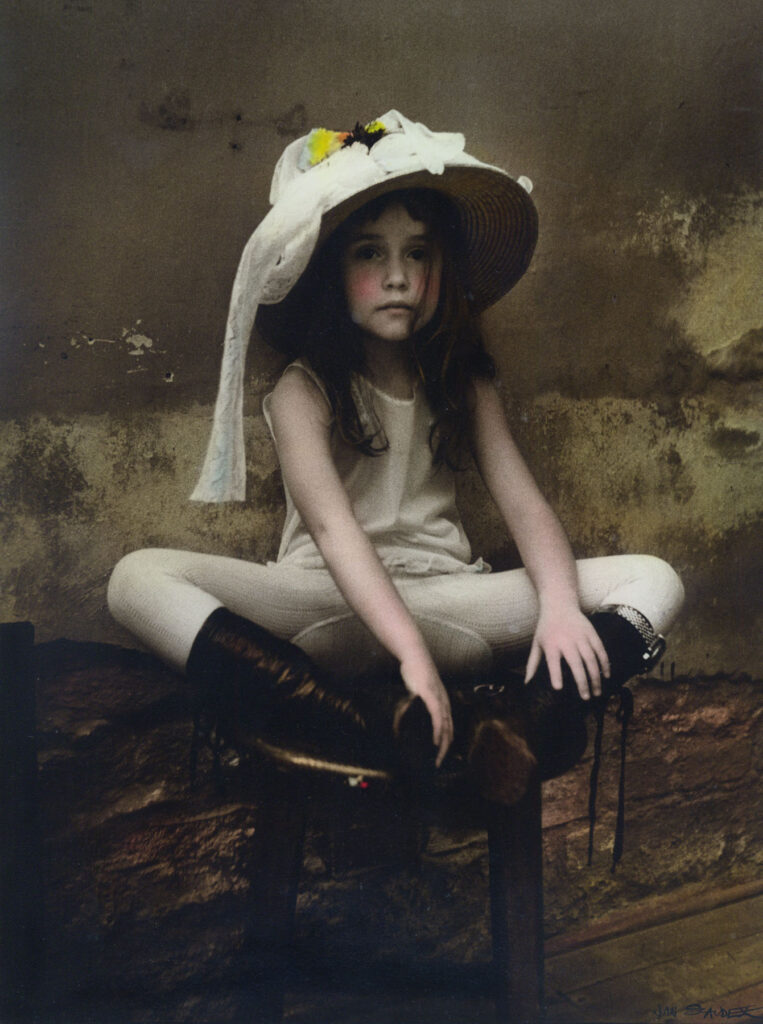
Jan Saudek: Karolina (also, Z. Ravorina In Victorian Style)
1974, hand-colored gelatin silver print, signed in ink on the image. Image size: 14″ x 11″, sheet size: framed 22″ x 17.75″ ($800–$1,600)
Jan Saudek was born in Prague in 1935. His first attempts at photography were made when he received his first camera at the age of 15. In the years that followed, he was also drawn to painting. His artistic work was heavily influenced by the catalogue of the photography exhibition, Family of Man by Edward Steichen. This work pushed him to make his typical ‘wall’ compositions in the early 1970s, which became a sort of projection screen for his figural scenes.
In the following years, his international recognition grew quickly, and he worked with numerous artists, including Paule Pia, Kartsen Fricke, Marlene and Jean-Pierre Vorlet, Pierre Borhan, Anita Neugebauer and David Travis.
His first book of photography, Il teatro della vita, was published in Milan in 1981. Shortly afterwards he devoted himself fully to his work as a free-lance photographer. In 1990 he received the French Ordre des Arts et des Lettres, and the French director Jerome de Missolz made a film about him with the title Jan Saudek–Prague printemps 1990. In 2005 he published his most extensive book, SAUDEK, which was accompanied by a large retrospective exhibition in Prague.
Today, Jan Saudek is hailed as one of the most renowned Czech photographers. His work has been featured in over 400 solo and group exhibitions worldwide, and is included in the many international museum collections.
BUY NOW – $500
1974, hand-colored gelatin silver print, signed in ink on the image. Image size: 14″ x 11″, sheet size: framed 22″ x 17.75″ ($800–$1,600)
Jan Saudek was born in Prague in 1935. His first attempts at photography were made when he received his first camera at the age of 15. In the years that followed, he was also drawn to painting. His artistic work was heavily influenced by the catalogue of the photography exhibition, Family of Man by Edward Steichen. This work pushed him to make his typical ‘wall’ compositions in the early 1970s, which became a sort of projection screen for his figural scenes.
In the following years, his international recognition grew quickly, and he worked with numerous artists, including Paule Pia, Kartsen Fricke, Marlene and Jean-Pierre Vorlet, Pierre Borhan, Anita Neugebauer and David Travis.
His first book of photography, Il teatro della vita, was published in Milan in 1981. Shortly afterwards he devoted himself fully to his work as a free-lance photographer. In 1990 he received the French Ordre des Arts et des Lettres, and the French director Jerome de Missolz made a film about him with the title Jan Saudek–Prague printemps 1990. In 2005 he published his most extensive book, SAUDEK, which was accompanied by a large retrospective exhibition in Prague.
Today, Jan Saudek is hailed as one of the most renowned Czech photographers. His work has been featured in over 400 solo and group exhibitions worldwide, and is included in the many international museum collections.
BUY NOW – $500
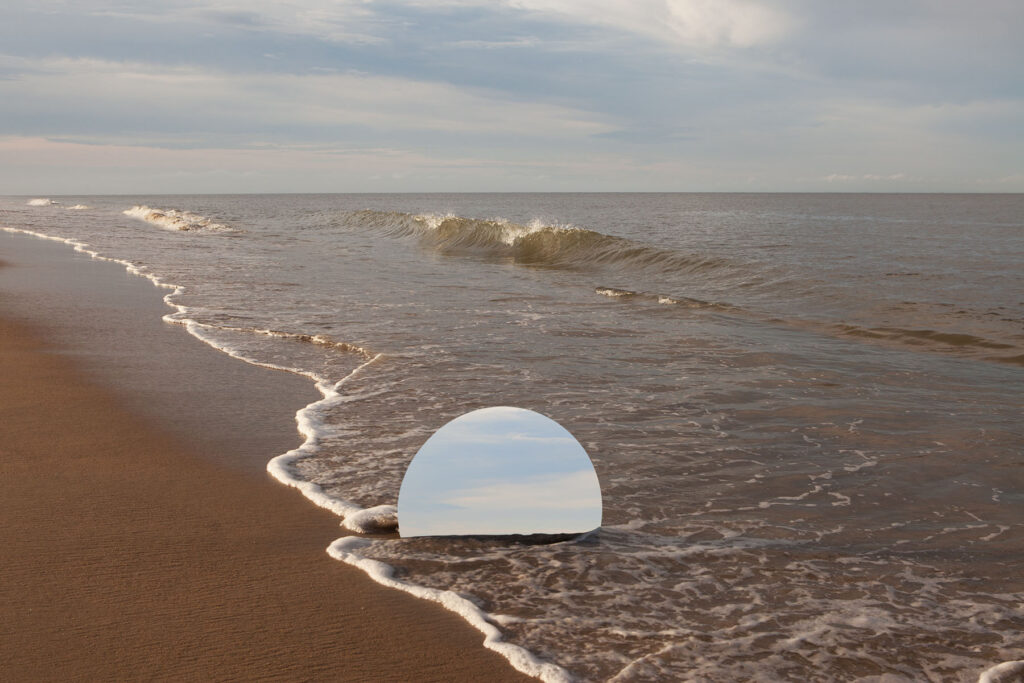
Keith Sharp: Mirror and Waves, Cape Henlopen State Park, DE
2020, archival pigment print, ed. 2/15, signed, titled, dated, and numbered verso. Image size: 16″ x 24″, sheet size: 18″ x 26″ ($300–$600)
BUY NOW – $200
2020, archival pigment print, ed. 2/15, signed, titled, dated, and numbered verso. Image size: 16″ x 24″, sheet size: 18″ x 26″ ($300–$600)
BUY NOW – $200
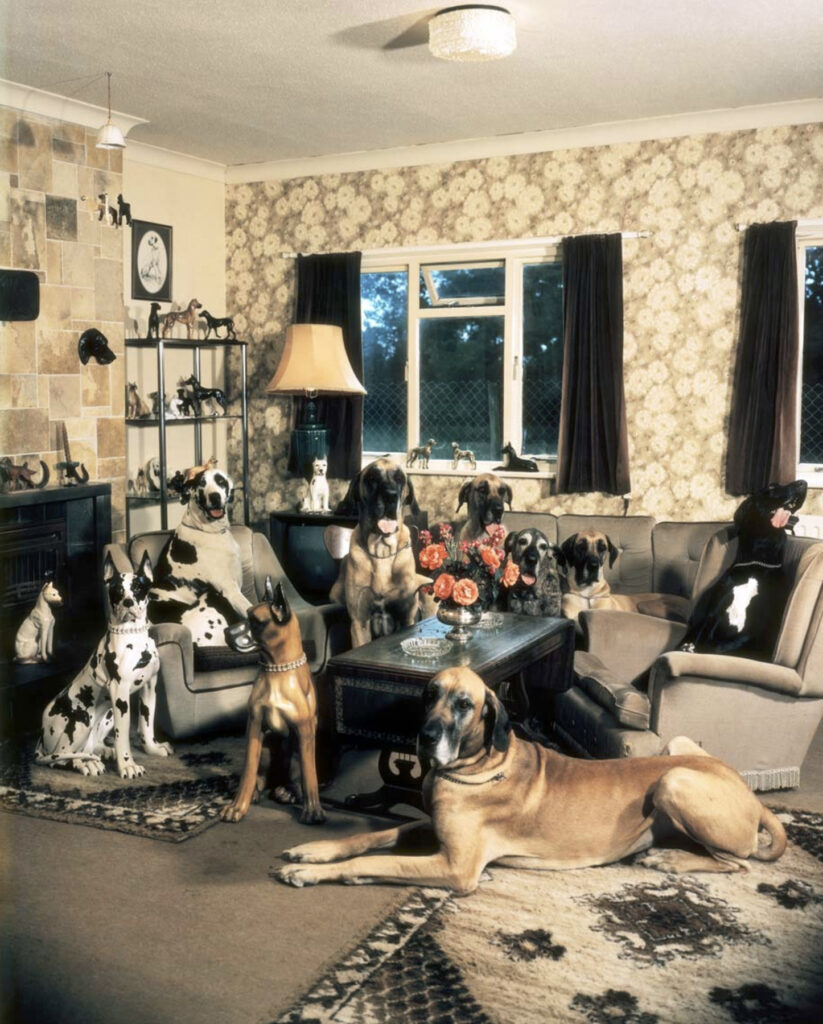
Neal Slavin: Great Dane Breeders Association
1984/later, archival pigment print, signed, titled, and dated recto. Image size: 18″ x 12″, sheet size: 19″ x 13″ ($1,500–$2,000)
From the book Britons; exhibited at ICP, 1987; also the National Museum of Photography, Film, and Television, and many other venues.
BUY NOW – $950
1984/later, archival pigment print, signed, titled, and dated recto. Image size: 18″ x 12″, sheet size: 19″ x 13″ ($1,500–$2,000)
From the book Britons; exhibited at ICP, 1987; also the National Museum of Photography, Film, and Television, and many other venues.
BUY NOW – $950
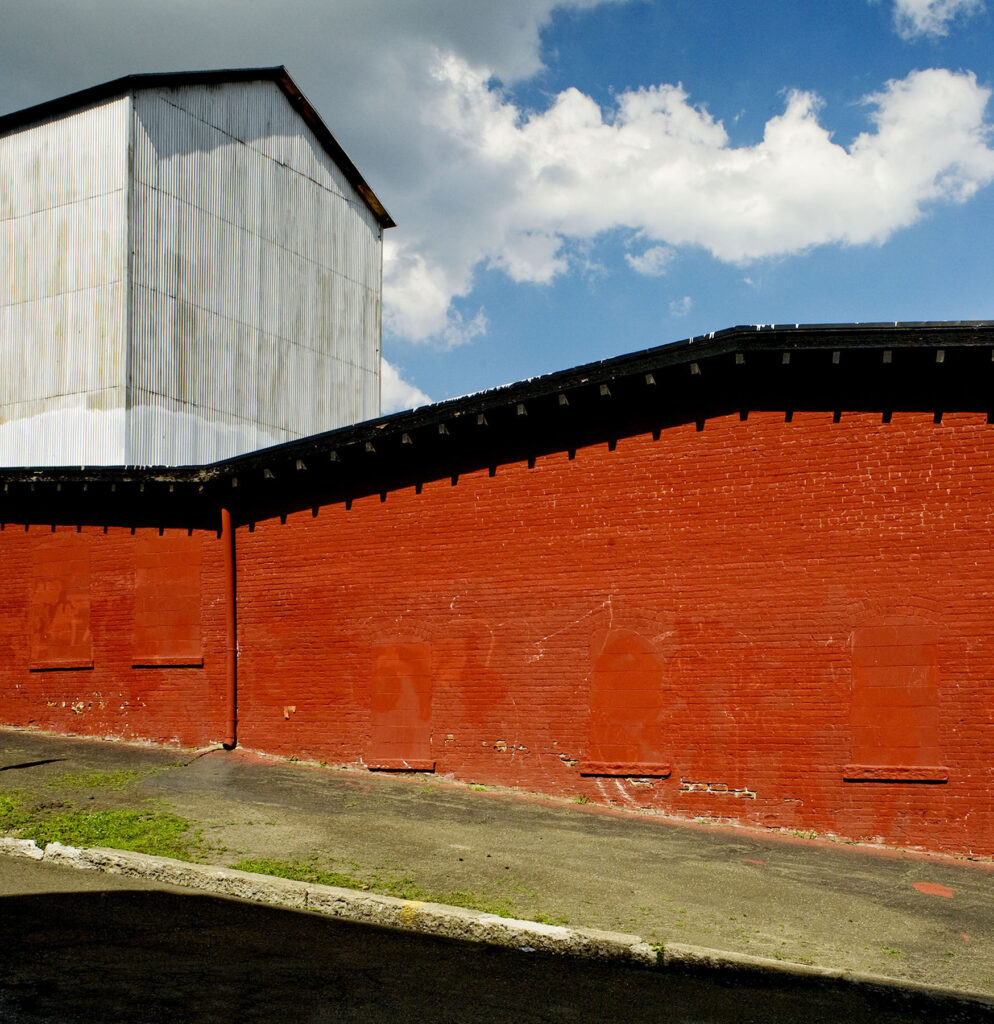
Joseph Squillante: Newburgh Red
2013/2024, archival pigment print, signed, titled, and dated verso. Image size: 11.3″ x 11″, sheet size: 17″ x 13″ ($1,000–$2,000)
Exhibited at the Beacon Institute, A Close Look: The Hudson River, 2013, and the Art Students League, Elizabeth B. Sullivan Gallery, 2015.
BUY NOW – $800
2013/2024, archival pigment print, signed, titled, and dated verso. Image size: 11.3″ x 11″, sheet size: 17″ x 13″ ($1,000–$2,000)
Exhibited at the Beacon Institute, A Close Look: The Hudson River, 2013, and the Art Students League, Elizabeth B. Sullivan Gallery, 2015.
BUY NOW – $800
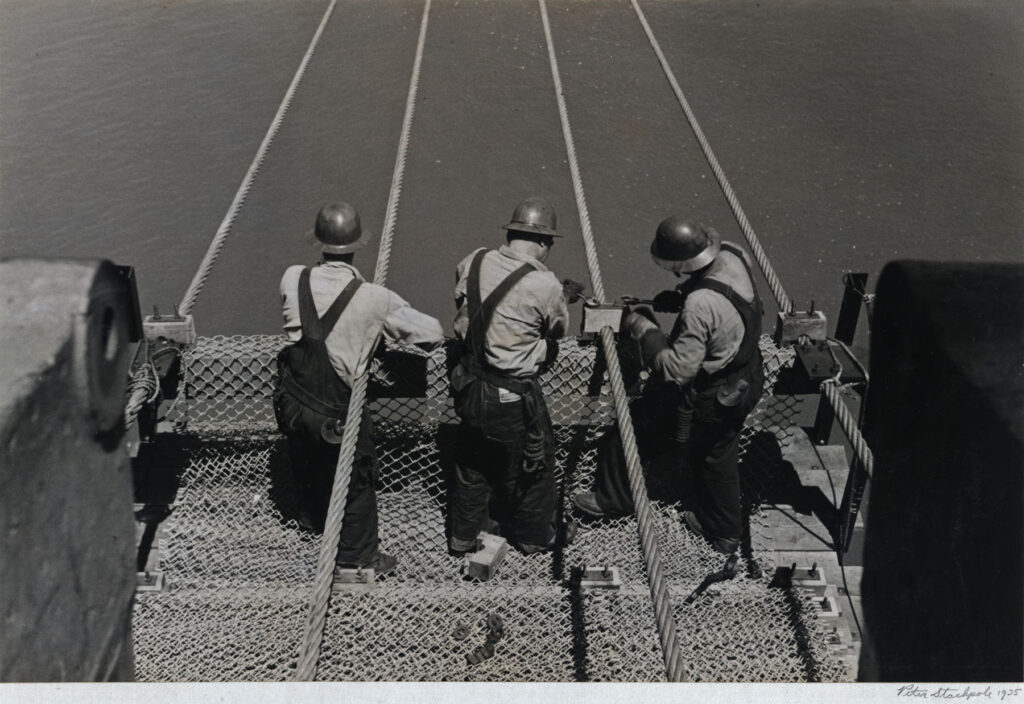
Peter Stackpole: Building the San Francisco Bay Bridge
1935, vintage silver print, signed and dated on mount recto. Image size: 6.375″ x 9.625″, sheet size: 6.375″ x 9.625″ ($1,300–$2,600)
Peter Stackpole, The Bridge Builders: Photographs and Documents of the Raising of the San Francisco Bay Bridge, 1934–1936 (1984), frontispiece [therein titled: At the top of a tower bridgemen prepare to push a preassembled section of the catwalk into place.]
BUY NOW – $900
1935, vintage silver print, signed and dated on mount recto. Image size: 6.375″ x 9.625″, sheet size: 6.375″ x 9.625″ ($1,300–$2,600)
Peter Stackpole, The Bridge Builders: Photographs and Documents of the Raising of the San Francisco Bay Bridge, 1934–1936 (1984), frontispiece [therein titled: At the top of a tower bridgemen prepare to push a preassembled section of the catwalk into place.]
BUY NOW – $900

Isaiah West Taber: Santa Clara Street and the Electric Light Tower, San Jose, CA
1880s, albumen print, number (“3751″), titles, and with photographer name and location recto. Image size: 7.625″ x 9.5625″, sheet size: 11.5″ x 14.75” mounted ($750–$1,500)
The San Jose electric light tower, also known as Owen’s Electric Tower after its creator and chief booster, was constructed in 1881 at an intersection in downtown San Jose, CA, as a ‘high light’ or moonlight tower to light the city using arc lights. A pioneer use of electricity for municipal lighting, it was later strung with incandescent bulbs and was destroyed in a storm in December 1915.
The electric light tower was proposed by J. J. Owen, publisher of the San Jose Mercury, the precursor of The Mercury News, as a way of lighting the entire center of San Jose on the ‘high light’ principle, at less expense than gas street lighting. Owen was inspired by the electric lighting in San Francisco, the first in the world, which he had visited in 1879. He designed the tower, estimating that it would require $5,000 and one month to build it. Just under $3,500 was raised by public subscription, and groundbreaking took place on August 11, 1881. The tower was dedicated on December 13 the same year.
As built, the tower was 207 feet (63 m) tall, topped by a platform holding six arc lamps with a diffusing and protective shield above them and a 30 ft. (9.1 m.) flagpole for a total height of 237 feet (72 m.) and a total of 24,000 candlepower. It stood on a brick foundation and spanned the intersection of Santa Clara and Market Streets. It was made of hollow iron pipe and braced with iron hoops. Owen modeled it on the moonlight tower built earlier in 1881 in Akron, OH, widening the base to 75 feet (23 m.) square, so that supporting cables would not be needed; the Akron tower collapsed when the cables broke.
BUY NOW – $400
1880s, albumen print, number (“3751″), titles, and with photographer name and location recto. Image size: 7.625″ x 9.5625″, sheet size: 11.5″ x 14.75” mounted ($750–$1,500)
The San Jose electric light tower, also known as Owen’s Electric Tower after its creator and chief booster, was constructed in 1881 at an intersection in downtown San Jose, CA, as a ‘high light’ or moonlight tower to light the city using arc lights. A pioneer use of electricity for municipal lighting, it was later strung with incandescent bulbs and was destroyed in a storm in December 1915.
The electric light tower was proposed by J. J. Owen, publisher of the San Jose Mercury, the precursor of The Mercury News, as a way of lighting the entire center of San Jose on the ‘high light’ principle, at less expense than gas street lighting. Owen was inspired by the electric lighting in San Francisco, the first in the world, which he had visited in 1879. He designed the tower, estimating that it would require $5,000 and one month to build it. Just under $3,500 was raised by public subscription, and groundbreaking took place on August 11, 1881. The tower was dedicated on December 13 the same year.
As built, the tower was 207 feet (63 m) tall, topped by a platform holding six arc lamps with a diffusing and protective shield above them and a 30 ft. (9.1 m.) flagpole for a total height of 237 feet (72 m.) and a total of 24,000 candlepower. It stood on a brick foundation and spanned the intersection of Santa Clara and Market Streets. It was made of hollow iron pipe and braced with iron hoops. Owen modeled it on the moonlight tower built earlier in 1881 in Akron, OH, widening the base to 75 feet (23 m.) square, so that supporting cables would not be needed; the Akron tower collapsed when the cables broke.
BUY NOW – $400
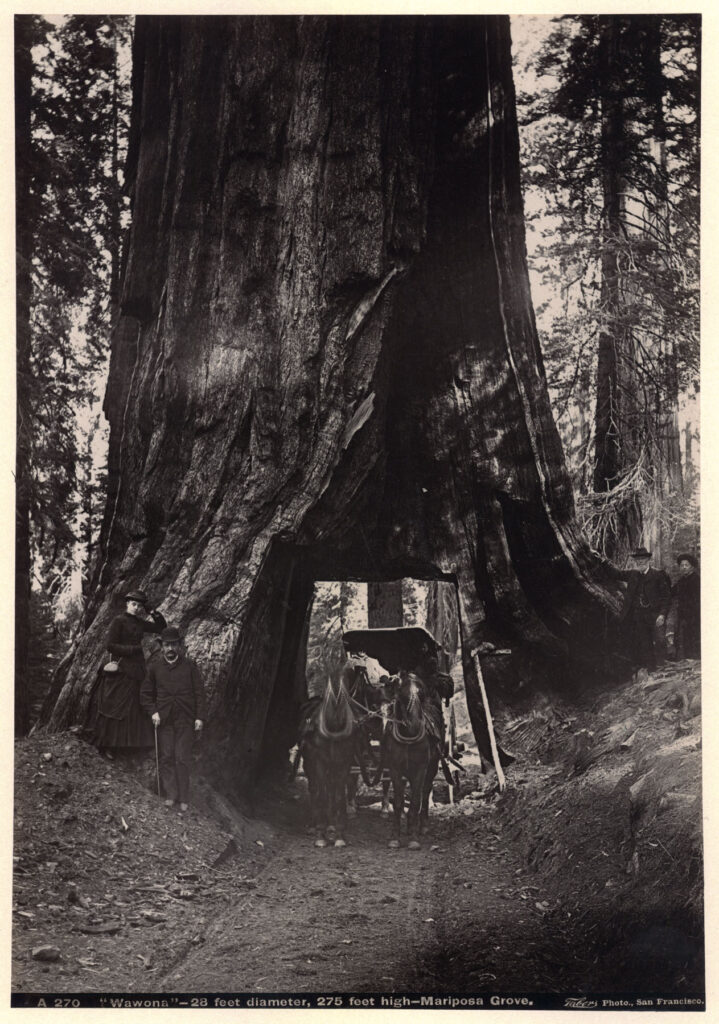
Isaiah West Taber: Wawona (Giant California Redwood)
c.1880, albumen print, photographer’s name and location and titled in negative “A 270 “Wawona” – 28 feet diameter, 275 feet high-Mariposa Grove” reversed out in strip at the bottom of the image. Written in period ink on verso: “Amerika. California, Yosemite.” Image size: 11.75″ x 8.25″, sheet size: 11.75″ x 8.25″ ($750–$1,500)
A very rich and beautiful print. See: Francoise Heilbrun and Quentin Bajac: Orsay: La Photographie (editions Scala 2000) p. 70 for a very slight variant.
BUY NOW – $400
c.1880, albumen print, photographer’s name and location and titled in negative “A 270 “Wawona” – 28 feet diameter, 275 feet high-Mariposa Grove” reversed out in strip at the bottom of the image. Written in period ink on verso: “Amerika. California, Yosemite.” Image size: 11.75″ x 8.25″, sheet size: 11.75″ x 8.25″ ($750–$1,500)
A very rich and beautiful print. See: Francoise Heilbrun and Quentin Bajac: Orsay: La Photographie (editions Scala 2000) p. 70 for a very slight variant.
BUY NOW – $400
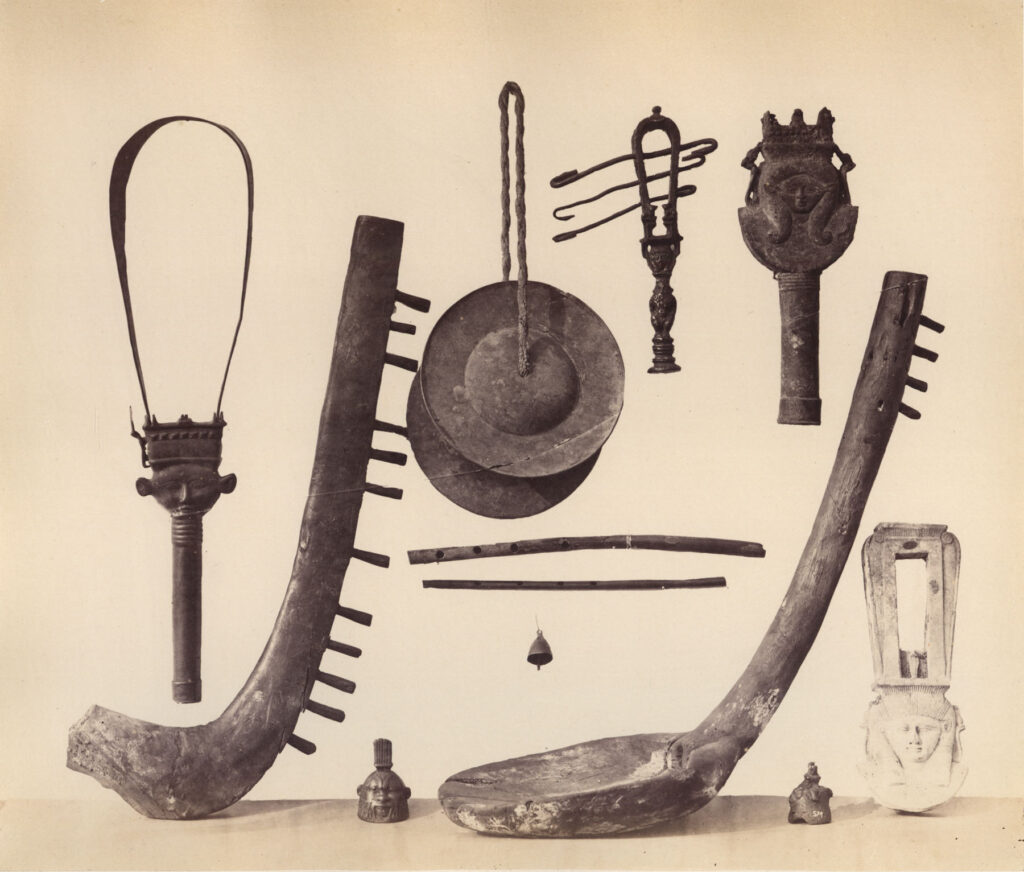
Stephen Thompson: 306. Musical Instruments
c.1870, albumen print from wet collodion negative, title and previous owner’s stamp on mount recto. Image size: 9.375″ x 11.25″, sheet size: 14″ x 17.875″ original mount ($800–$1,600)
BUY NOW – $400
c.1870, albumen print from wet collodion negative, title and previous owner’s stamp on mount recto. Image size: 9.375″ x 11.25″, sheet size: 14″ x 17.875″ original mount ($800–$1,600)
BUY NOW – $400
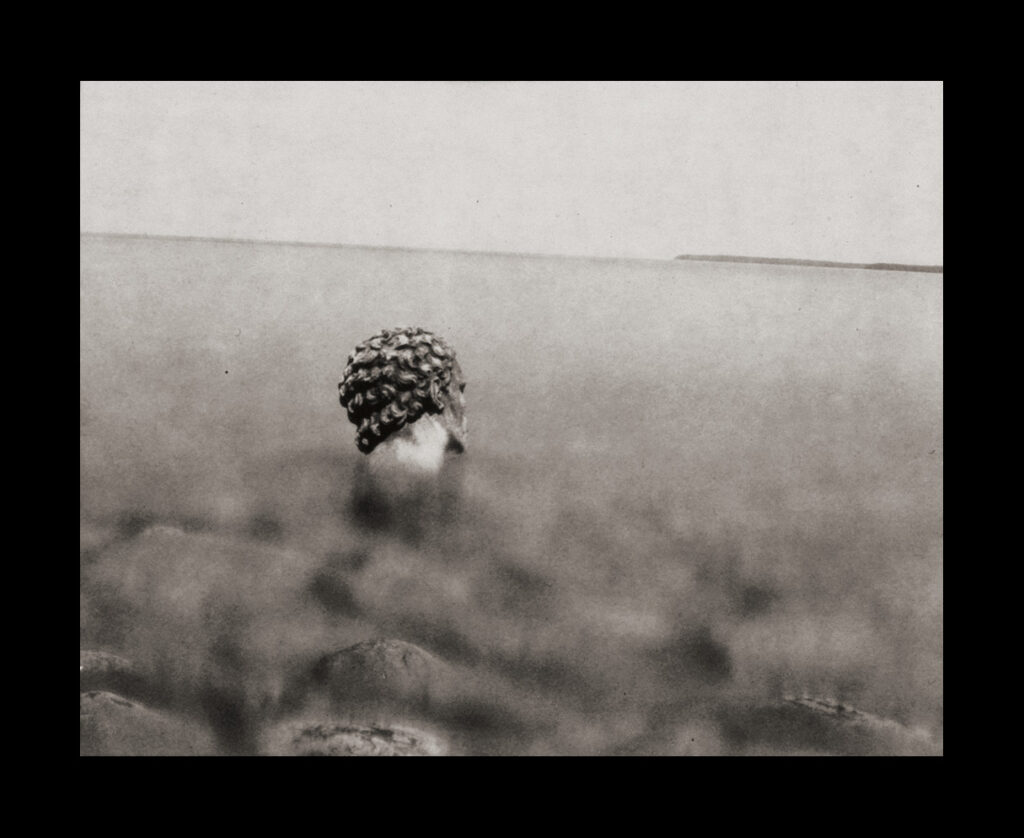
Ruth Thorne-Thomsen: Limbo Man, Wisconsin, from the series Songs of the Sea
1992, silver print, ed. 2/25, signed, titled, dated, and numbered verso. Image size: 4.5″ x 5.5″, sheet size: 4.5″ x 5.5″ ($5,000–$8,000)
BUY NOW – $4,000
1992, silver print, ed. 2/25, signed, titled, dated, and numbered verso. Image size: 4.5″ x 5.5″, sheet size: 4.5″ x 5.5″ ($5,000–$8,000)
BUY NOW – $4,000
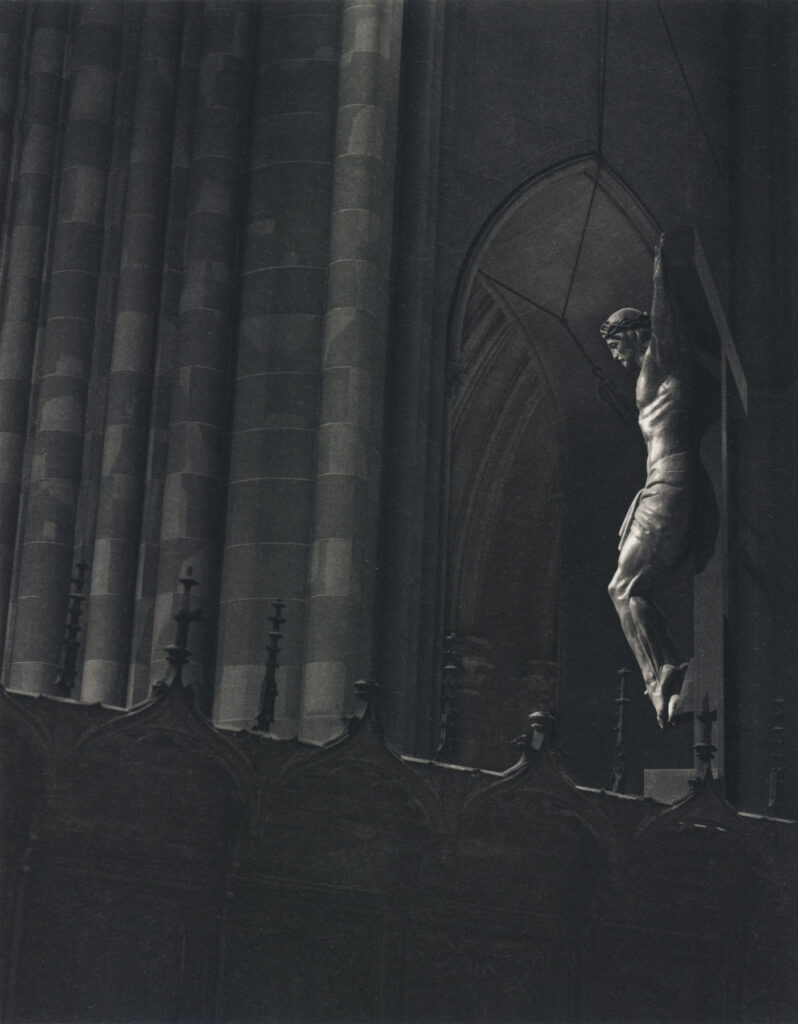
Lincoln H. Turner: Crucifix in the Narthex (St. John’s Cathedral)
nd, platinum print, ed. 4/25, signed and numbered recto. Image size: 8.25″ x 6.5″, sheet size: 20″ x 16″ ($300–$600)
BUY NOW – $150
nd, platinum print, ed. 4/25, signed and numbered recto. Image size: 8.25″ x 6.5″, sheet size: 20″ x 16″ ($300–$600)
BUY NOW – $150
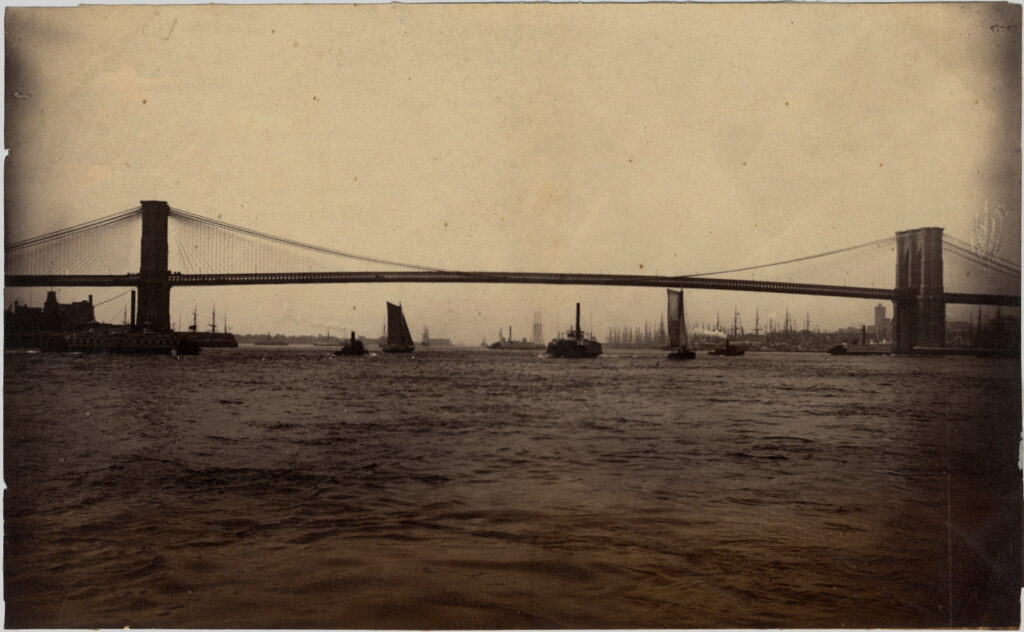
Unknown: Brooklyn Bridge
c. 1880, albumen print . Image size: 4.625″ x 7.5″, sheet size: 4.625″ x 7.5″ ($300–$600)
BUY NOW – $200
c. 1880, albumen print . Image size: 4.625″ x 7.5″, sheet size: 4.625″ x 7.5″ ($300–$600)
BUY NOW – $200
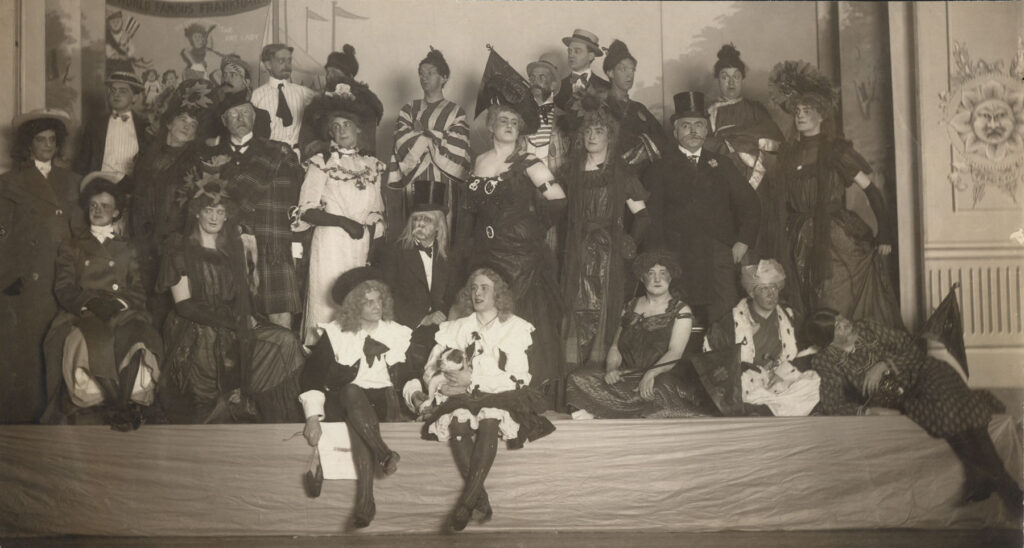
Unknown: Group portrait of theater troupe (25 male subjects many in female costumes)
c. 1900, vintage silver gelatin or albumen print. Image size: 7″ x 13″, sheet size: 16″ x 20″ ($200–$400)
BUY NOW – $100
c. 1900, vintage silver gelatin or albumen print. Image size: 7″ x 13″, sheet size: 16″ x 20″ ($200–$400)
BUY NOW – $100
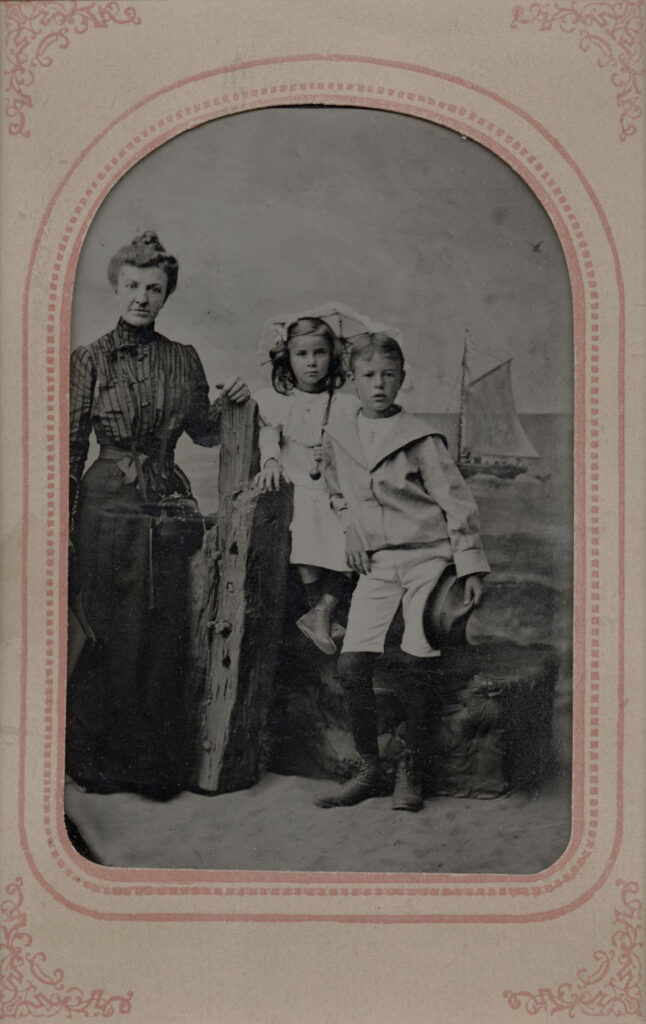
Unknown: Woman with two children
c. 1870s, tintype. Image size: 4.5″ x 3″, sheet size: 6.5″ x 4.25″ paper mount ($200–$400)
In original paper mount.
BUY NOW – $100
c. 1870s, tintype. Image size: 4.5″ x 3″, sheet size: 6.5″ x 4.25″ paper mount ($200–$400)
In original paper mount.
BUY NOW – $100
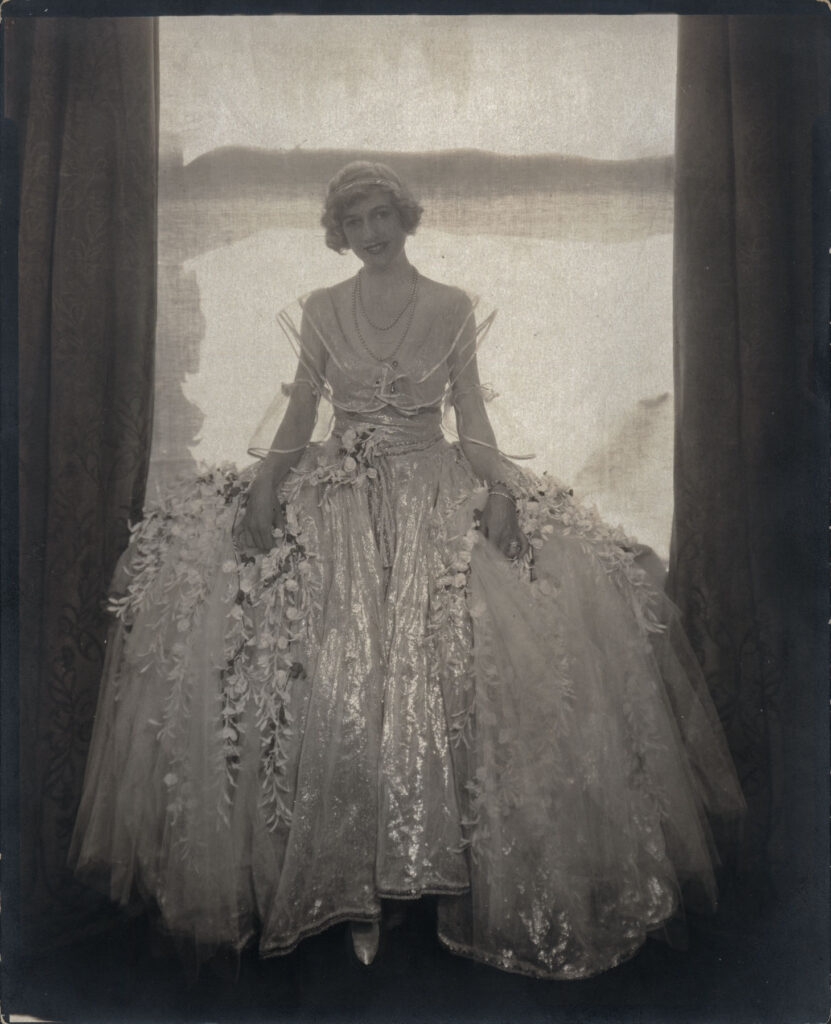
Vogue Magazine Photographer: Woman in Gown
1920s, silver print. Image size: 9.5″ x 7.5″, sheet size: 10″ x 8″ ($1,200–$1,500)
Provenance: photographer to Vogue; collection of Dr. Agha, Vogue’s art director. Probably late 1920s-early 1930s. Some of the photographers that Agha used in Vogue included Edward Steichen, Charles Sheeler, Hoyningen-Huene, Horst, Cecil Beaton, Anton Bruehl, Chalon, Lusha Nelson, Toni Frissell and Andre de Dienes.
BUY NOW – $750
1920s, silver print. Image size: 9.5″ x 7.5″, sheet size: 10″ x 8″ ($1,200–$1,500)
Provenance: photographer to Vogue; collection of Dr. Agha, Vogue’s art director. Probably late 1920s-early 1930s. Some of the photographers that Agha used in Vogue included Edward Steichen, Charles Sheeler, Hoyningen-Huene, Horst, Cecil Beaton, Anton Bruehl, Chalon, Lusha Nelson, Toni Frissell and Andre de Dienes.
BUY NOW – $750
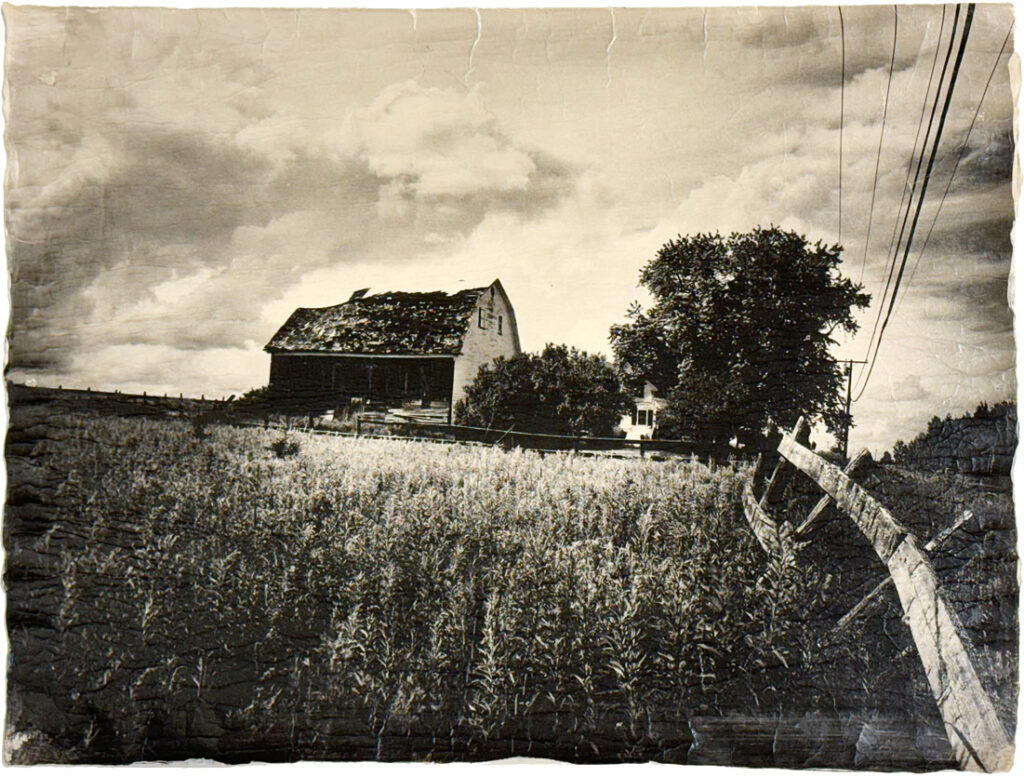
Al Wachlin, Jr.: Pelham Road, Washburn, #192
2008, hand-coated silver gelatin print on Gampi paper, ed. 3/10, signed, titled, dated, and numbered verso. Image size: 14.5″ x 20″, sheet size: framed 22.75″ x 28.75″ ($600–$1,200)
This series has been featured in numerous group and solo shows including the Print Center, 3rd Street Gallery, the Woodmere Art Museum, PhoPA Gallery, Perkins Center for the Arts, and the Light Room Gallery.
BUY NOW – $250
2008, hand-coated silver gelatin print on Gampi paper, ed. 3/10, signed, titled, dated, and numbered verso. Image size: 14.5″ x 20″, sheet size: framed 22.75″ x 28.75″ ($600–$1,200)
This series has been featured in numerous group and solo shows including the Print Center, 3rd Street Gallery, the Woodmere Art Museum, PhoPA Gallery, Perkins Center for the Arts, and the Light Room Gallery.
BUY NOW – $250

